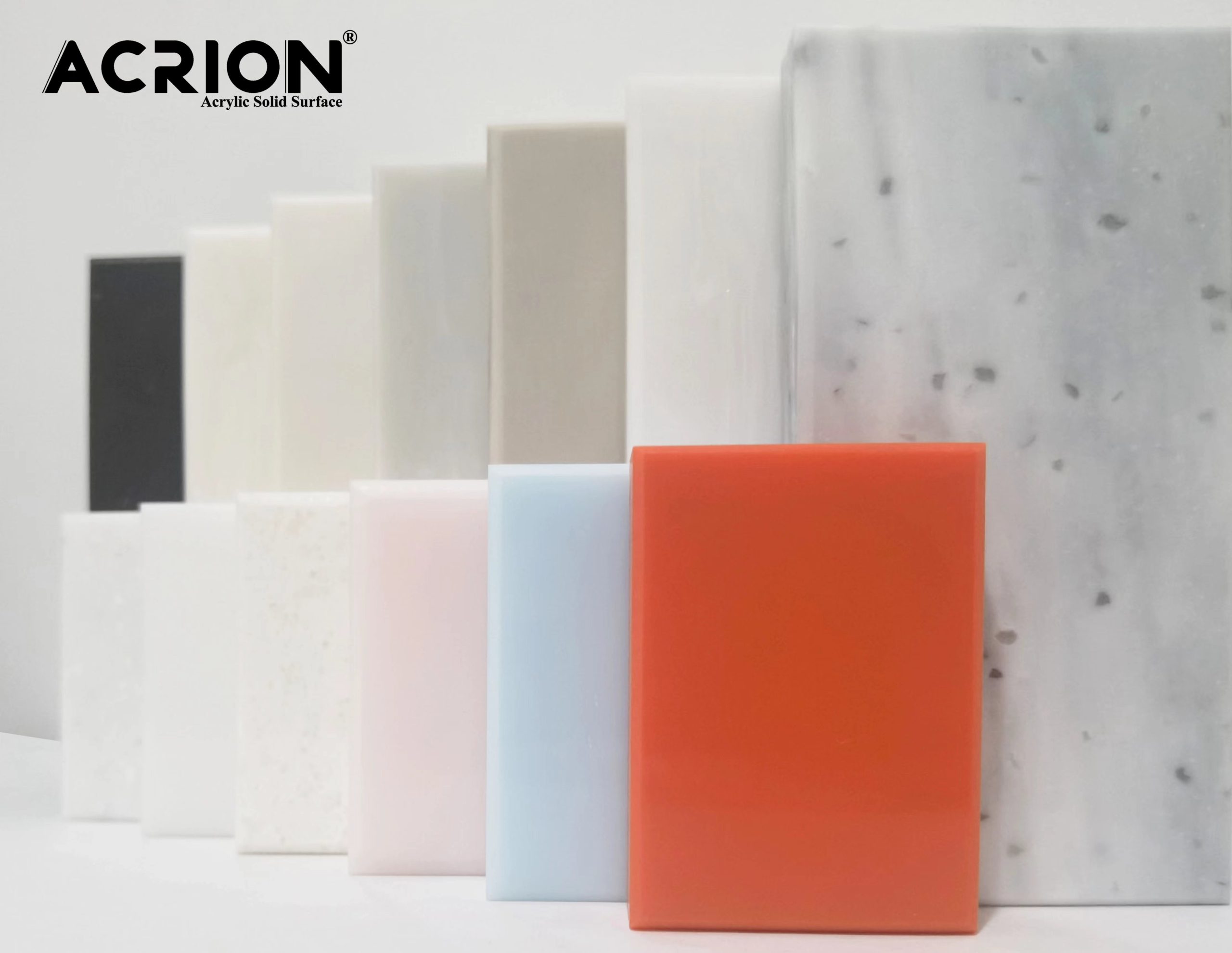In the design of beauty salon countertops, aesthetics and practicality need to be achieved through the joint efforts of material properties, functional integration and spatial aesthetics. The following is an analysis of its design logic from key dimensions:
First, material characteristics: A balance between texture and durability
Fine surface and visual luxury
The material should have a matte or slightly frosted texture to avoid visual stimulation caused by high light reflection, and at the same time enhance the tactile experience through fine textures. For instance, the surface can simulate the texture of natural stone, but it needs to maintain a pore-free characteristic to prevent stains from penetrating.
Antibacterial property and easy cleaning
The material should have antibacterial properties to reduce the risk of bacterial growth, especially suitable for areas where beauty tools are frequently touched. Daily cleaning only requires wiping with a damp cloth to avoid corrosion of the material by chemical cleaners.
Chemical corrosion resistance
It is necessary to resist the erosion of commonly used disinfectants, cosmetic residues and other chemical substances in beauty salons, ensuring that there are no corrosion marks on the surface after long-term use and maintaining its aesthetic appeal.
Second, functional integration: Tool storage and operational convenience
Invisible storage system
Under the countertop, built-in drawers or rotating storage racks are set up to categorize and store beauty tools, cotton pads, disinfectants, etc. The drawer panel should be flush with the countertop to avoid protruding structures and spoiling the overall aesthetic appeal.
Modular operation area
The functional areas are divided according to the beauty process. For example, the left side is the cleaning area, equipped with a liftable sink. The right side is the care area, equipped with an embedded heating plate or ultraviolet disinfection box. Each area is implicitly distinguished by differences in materials or colors.
Waterproof and moisture-proof design
A water-blocking strip should be set up along the edge of the countertop. The height is recommended to be 20 to 30 millimeters to prevent water stains from overflowing onto the cabinet. The connection between the sink and the countertop adopts a seamless splicing process to avoid mold problems caused by water seepage.
Third, spatial aesthetics: Atmosphere creation and brand tone
The color matches the brand tone
The color selection should be in harmony with the overall style of the beauty salon. For instance, light pink, off-white or light gray can convey a soft and professional atmosphere. Metallic colors or wood textures can be used as accents locally to enhance the spatial layering.
The lights interact with the materials
Indirect lighting is embedded under the countertop, such as LED light strips projected upwards onto the wall, creating a soft halo. The color of the lighting should be consistent with the main tone of the beauty salon. For example, warm white light can enhance the sense of warmth.
Minimalist form and spatial transparency
The countertop shape should be simple and avoid complex decorations. For instance, a suspended design is adopted, leaving an open space at the bottom to create a transparent visual effect and facilitate cleaning at the same time. The corners are rounded to avoid bumps and knocks.
Fourth, humanized design: Details enhance the user experience
Edge anti-collision treatment
The edges of the countertop should be rounded or chamfered to prevent accidental bumps by customers or employees. The radius of the rounded corners is recommended to be 5 to 10 millimeters, taking into account both safety and aesthetics.
High adjustability
For different beauty treatments, the height of the countertop can be adjusted. For instance, the recommended height for the facial care area is 75-80 centimeters, and for the body care area, it is 85-90 centimeters. The adjustment method should be convenient, such as electric lifting or manual knob.
Silent design
Drawers or storage cabinets should be equipped with silent sliding rails to avoid noise generated when opening and closing, which may interfere with the customer experience. Meanwhile, the sink drainage system should adopt an anti-clogging design to reduce the sound of water flow.
Fifth, Case Analysis: Design Practice of Beauty Salon Countertops
“Japanese Zen” beauty salon countertop
Material: Matte white artificial stone, with a surface that mimics the texture of natural sandstone.
Function: The left side is the cleaning area, equipped with a liftable sink. The right side is the nursing area, equipped with an embedded heating plate.
Aesthetics: Indirect lighting is embedded under the countertop, with a warm white light color, creating a natural contrast with the wooden storage cabinet.
“Modern minimalist” beauty salon countertop
Material: Light grey metallic artificial stone with no texture treatment on the surface.
Function: The entire countertop is an integrated operation area, equipped with a rotatable storage rack and a hidden power socket.
Aesthetics: The countertop is designed in a suspended style, with LED light strips embedded below, creating a tech-savvy light and shadow effect.
